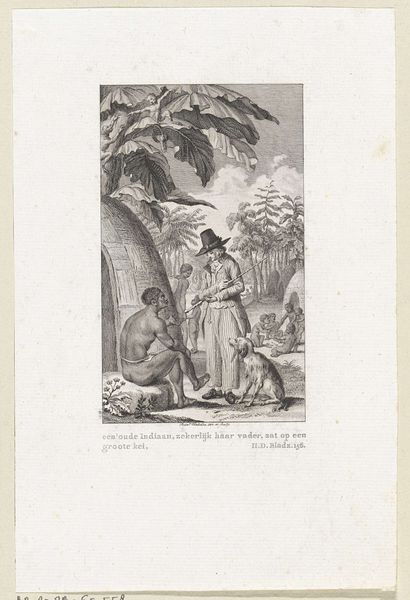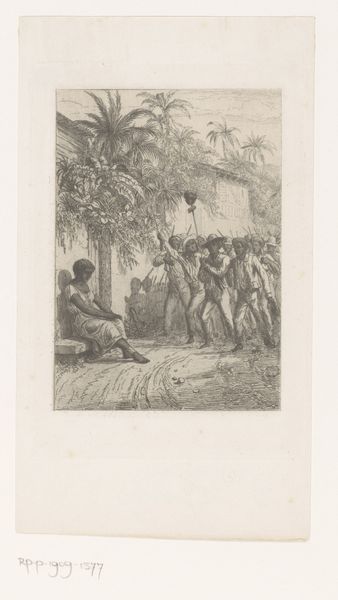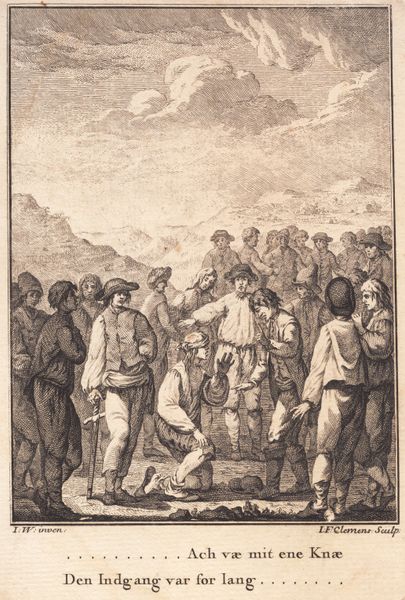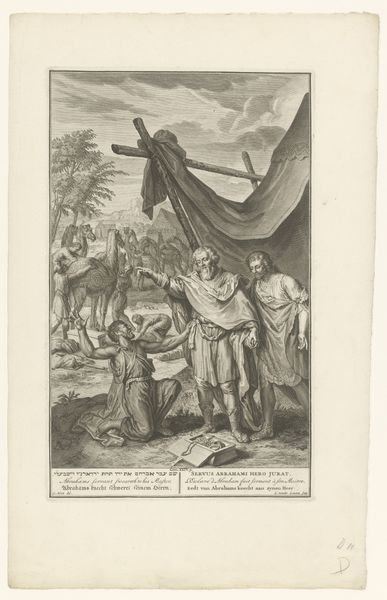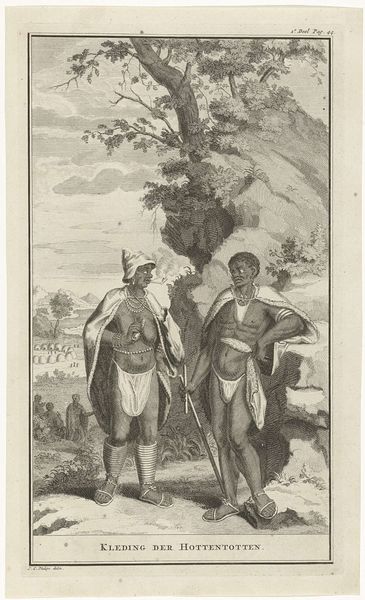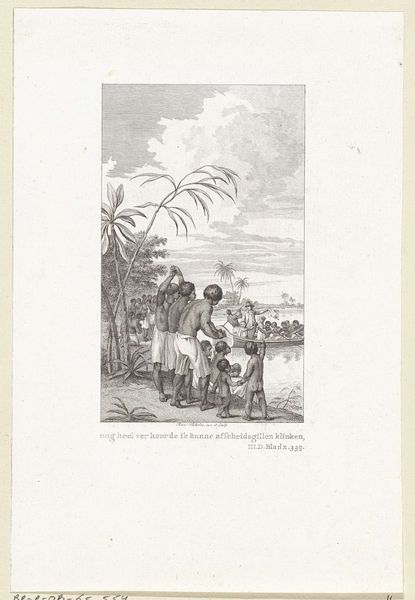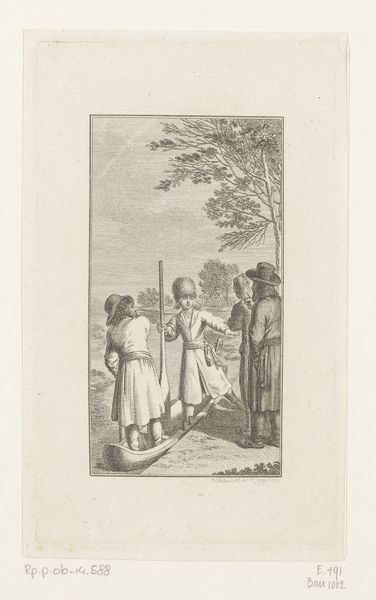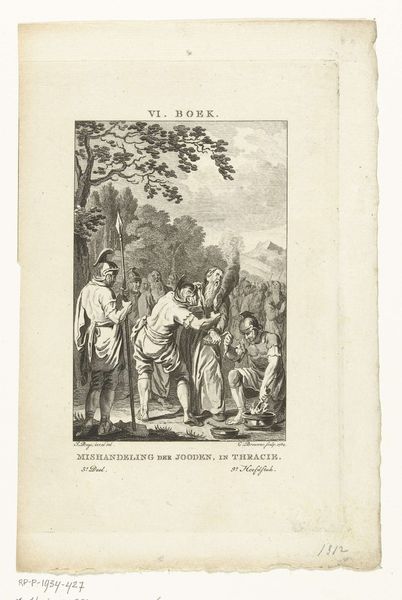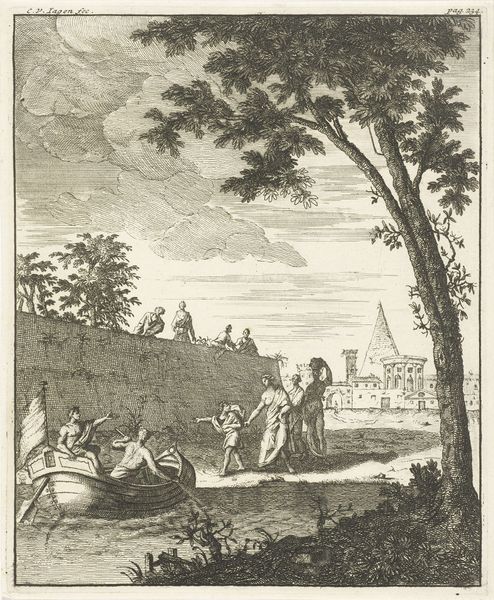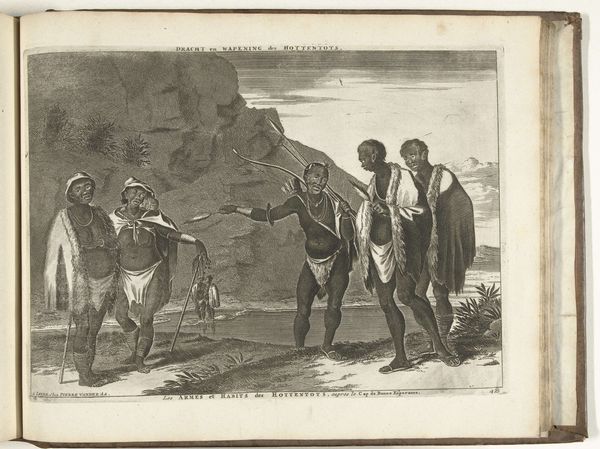
print, engraving
#
narrative-art
# print
#
figuration
#
orientalism
#
history-painting
#
academic-art
#
engraving
Dimensions: 144 mm (height) x 93 mm (width) (bladmaal)
Curator: Good morning. We're looking at a print by Georg Christian Schule, made in 1799, titled "Sort slave der piskes" – "Black slave being whipped." Editor: The scene immediately conveys a brutal narrative. The composition leads my eye directly to the central figures huddled on the ground, their postures radiating subjugation. The stark contrast between the overseer and the enslaved amplifies the injustice. Curator: Indeed. Let's consider the medium itself. This is an engraving, a painstaking process of incising lines into a metal plate, inking it, and pressing it onto paper. The precision allowed for detailed figuration and a clear depiction of the figures' gestures. Editor: Precisely, but that very precision can seem sterile, distanced from the visceral reality of the scene. It is not gestural; it hides the marks of its making, as if it's trying to present this as an event from which the materiality, the labor involved, is distant. How does this refinement shape the viewer's understanding? Curator: It arguably lends a certain authority to the image. The detailed rendering aims for accuracy. Furthermore, note the carefully balanced composition. The figures form a pyramidal shape, leading up to the overseer, thereby reinforcing his dominance within the visual space. Editor: But consider what that spatial control does! The very clean and organized look of this reinforces a colonial gaze; it allows the viewer to absorb the horror of the act under an aestheticized, controlled setting. Is this Orientalism, Academic art at its most ethically complicated? It hides production behind neat lines. Curator: Orientalism is absolutely present in how Schule chose to stage and frame this scene. Academic conventions also dictate certain ways of representation. Editor: So this meticulous and clean aesthetic normalizes what should not be normalized by subtly justifying hierarchy, reducing human suffering to visual data? It brings into sharp focus how even the "neutral" application of a print becomes another tool in a larger system of violence. Curator: The tension we've identified is precisely where meaning resides. Its form, through material process and representational language, frames this horrific moment for its late-18th-century audience. Editor: Well, discussing the relationship between representation, materiality, and violence provides an extremely powerful insight, offering us an opportunity for some deep reflection, hopefully a lesson.
Comments
No comments
Be the first to comment and join the conversation on the ultimate creative platform.

